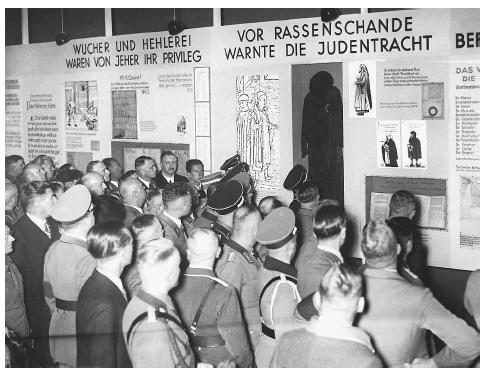Propaganda, Uses and Psychology
█ CARYN E. NEUMANN
Propaganda is a form of communication that attempts to influence the behavior of people by affecting their perceptions, attitudes and opinions. Propaganda can restructure hostile attitudes, reinforce friendly attitudes, or maintain the continued neutrality of those people who are undecided. A characteristic of propaganda is its reliance upon devices designed to discourage reflective thought such as name calling, use of glittering generalities like "freedom" or "injustice," use of prestigious symbols, endorsements from prominent persons, endorsements from regular folk, get-on-the-bandwagon representations, and cardstacking to minimize or maximize events. Propaganda does not always advance an argument and is often aimed instead at advancing an image or general system of ideas that implicitly supports an action or policy.
While propaganda has existed for ages, the advent of twentieth century mass communication enabled it to flourish and it has been employed with increasing sophistication in all major conflicts beginning with World War I. Unlike other forms of warfare, the success or failure of propaganda cannot be immediately known or measured. It is a continuous process that persuades without seeming to do so. The sources and accuracy of propaganda mark it as being one of three forms: white, black, or gray.
White propaganda comes from a source that is identified correctly and the information in the message tends to be accurate. The Voice of America (VOA) is an example of a white propaganda unit because it presents a positive image of the United States. While the VOA is not connected with the military, armed forces have commonly used radio to destroy the enemy's will to resist with a minimum loss of blood. During the 1991 Persian Gulf War, the U.S. Fourth Psychological Operations Group produced a white propaganda radio program that featured testimonials from happy Iraqi prisoners of war along with prayers from the Koran and the location of U.S. bomb targets for the next day. A great majority of Iraqi defectors said that the broadcasts influenced their decision to surrender. White propaganda attempts to build credibility with the audience by convincing them of the good intentions of the sender.
Black propaganda, from a source that is often well concealed, employs a high number of distortions or out-right falsehoods. It is also categorized as disinformation, from the name of a KGB division, dezinformatsia, that specialized in such a form of creative deceit. In World War I, Germany made a crude and futile attempt to persuade French soldiers at the front to abandon their units by posting large signs advising them that British men were engaging in sexual relations with the soldiers' wives. By World War II, the same sort of message designed to demoralize troops received more polish through the transmissions of Lord Haw Haw and Tokyo Rose. A similar style of disinformation came in the form of "The New England Broadcasting Station." This station, supposedly run by discontented British subjects, began sending radio transmissions of war news in the weeks prior to the planned invasion of England by Germany. The station was actually an undercover German operation that aimed to reduce the morale of the British people. Black propaganda seeks to destroy the credibility of opposition governments.
Gray propaganda may or may not be correctly identified and the accuracy of the information is uncertain. In the aftermath of the failed 1961 CIA-led Bay of Pigs invasion, the VOA denied any American involvement. While the source of the information was clearly identified as the VOA, the information was false. Sometimes gray propaganda is true and designed to embarrass an enemy. During the Cold War, the Soviet Union used examples of American racism, such as lynchings, to slow U.S. advances throughout Africa, Asia, and Latin America. The damage that this gray propaganda caused to foreign relations ultimately prompted the U.S. government to back domestic civil rights legislation.
By turning enemies into friends or neutrals through the power of persuasion, propaganda offers a relatively

inexpensive way of reducing armed conflict and bolstering national security. For this reason, it will most likely remain a popular weapon in government arsenals.
█ FURTHER READING:
BOOKS:
Dudziak, Mary L. Cold War Civil Rights: Race and the Image of American Democracy. Princeton: Princeton University Press, 2000.
Jowett, Garth S., and Victoria O'Donnell. Propaganda and Persuasion. Thousand Oaks, CA: Sage Publications, 1999.
Sproule, J. Michael. Channels of Propaganda. Bloomington, IN: EDINFO Press, 1994.
SEE ALSO
Bay of Pigs
Black Ops
CIA (United States Central Intelligence Agency)
Cold War (1945█1950): The start of the atomic age
Cold War (1950█1972)
Disinformation
Information Warfare
KGB (Komitet Gosudarstvennoi Bezopasnosti, USSR Committee of State
Security)
Lord Haw-Haw
Persian Gulf War
Tokyo Rose
Voice of America (VOA), United States
Comment about this article, ask questions, or add new information about this topic: